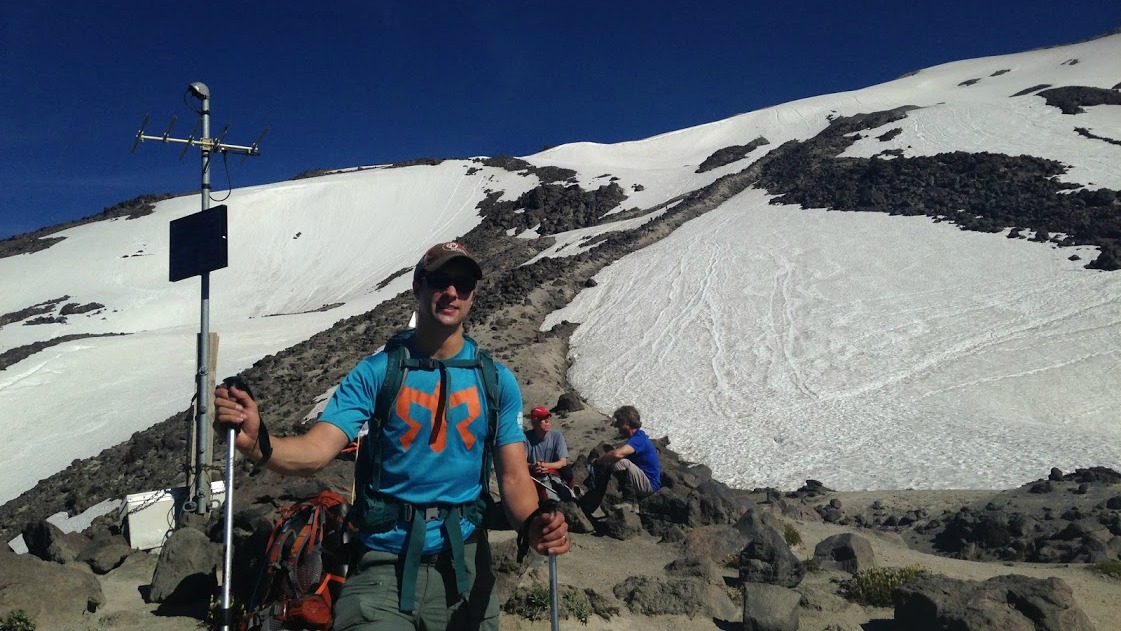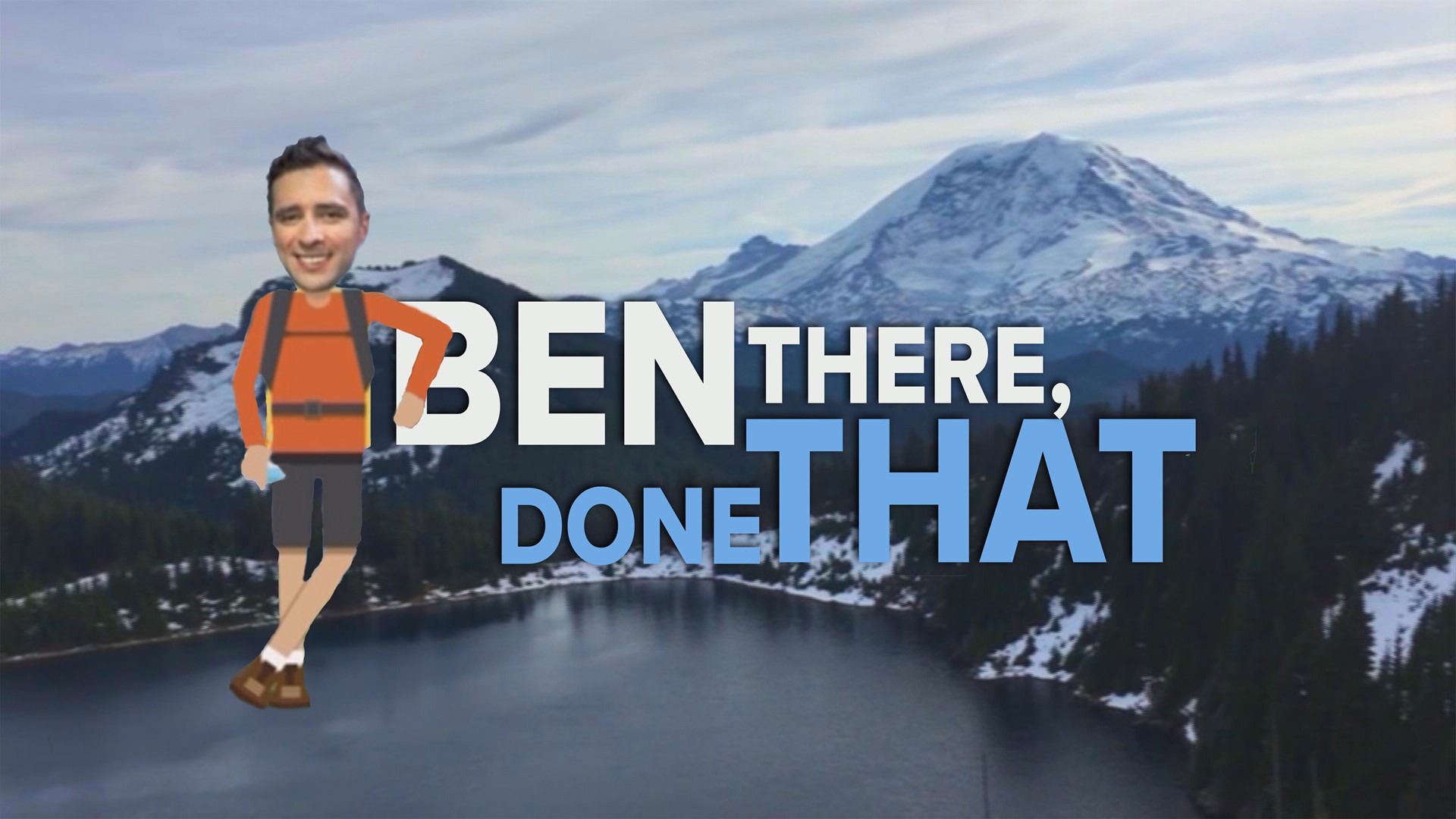We finally got to tackle our first major summit on Ben There Done That, Mount St. Helens. It’s one of the most studied mountains in the world, and it feels like it was virtually untouched since the eruption back in 1980.
For those who have thought about making their first summit attempt, while it is difficult, this is one of the easier volcano summits in the state. It is a non-technical hike meaning you don’t need any special equipment, and is possible to hike in a day.
This hike started out from our tent site at Marble Mountain Snow-Park just before dawn. Note that the earlier you start your hike, the more solid the snowpack, and the less afternoon heat you’ll have to deal with. Hiking through slush on a hot day is no fun!
After a quick coffee and scone breakfast, we were off. The hike begins in the woods, with the mountain peeking out behind the trees from time to time. Enjoy the shade while you have it. After a couple of miles, the trees abruptly end, and on a clear day, you will be in the sun all day long. Bring extra sunscreen!
Once the trees end, you get the full visual of how the landscape was changed by the eruption. There is one of several lava chutes you follow much of the way (which is why it’s called the ‘Worm Flows’ route. There are tons of beach ball sized boulders everywhere with sharp jagged edges. You know the decorative pumice stone you can buy for your garden? This place is littered with those. Much of the hike consists of scrambling over these rocks. Good gloves are recommended, preferably ones that don’t get too hot like gardening gloves.
The ‘Worm Flows’ route is also the winter route and is the most direct to the summit. Since this hike, the ‘Monitor Ridge’ route has opened offering less distance and less elevation gain.
The toughest part of the hike is an incline of ash, sand, and pumice stone. It feels like you’re taking two steps forward, and one step back. The summit can seem quite far away at this point.
After you leave the rocks and sand, it’s on to bright, reflective snow. This is where applying sunscreen under your chin comes in handy. The sun reflects off the snow-cooking places you might not think would get burnt. As the hot summer weather continues, the snow will melt almost entirely.
After a couple “false summits," we finally make it to the summit. Right now there is still a big snow cornice that obstructs part of the view. There is a better vantage point further down the crater rim. This is raw geology in the making. Make sure you check out the different colored layers of rock around the crater rim. The ever-growing lava dome continues to steam to this day.
The view up here is amazing! On a clear day, you can see Rainier, Adams, Hood, and occasionally Mt. Jefferson.
As you gaze into the crater, remember that this mountain used to be a symmetrical cone about 1,300 feet taller! Imagine how much energy it took to blow the entire side of the mountain out!
While the view is amazing up top, the best part is the ride down. While there still is snow left on the mountain, I prefer to glissade. It cuts your return time in half, and is so much fun!
Glissade: (ɡləˈsäd) - noun - a way of sliding down a steep slope of snow or ice, typically on the feet with the support of an ice ax.
A couple of additional notes: you need a permit to climb above 4,800 feet on Mount St. Helens. While they are currently sold out through the rest of summer, you can go to www.purmit.com where you’ll find people who bought a permit for a specific day who can’t go and want to sell it. Most will sell for face value or less ($22 per person).
Mileage (round trip): 12 miles
Peak elevation: 8,363 feet
Elevation gain: 5,699 feet
Learn more about this hike.
Recommended amenities:
- Sunglasses – to protect your eyes
- Sunscreen – to protect your skin
- Working gloves – to protect your hands
- Hiking poles – to protect your knees
- Garbage bag or snow pants – to protect your bottom on the glissade down


